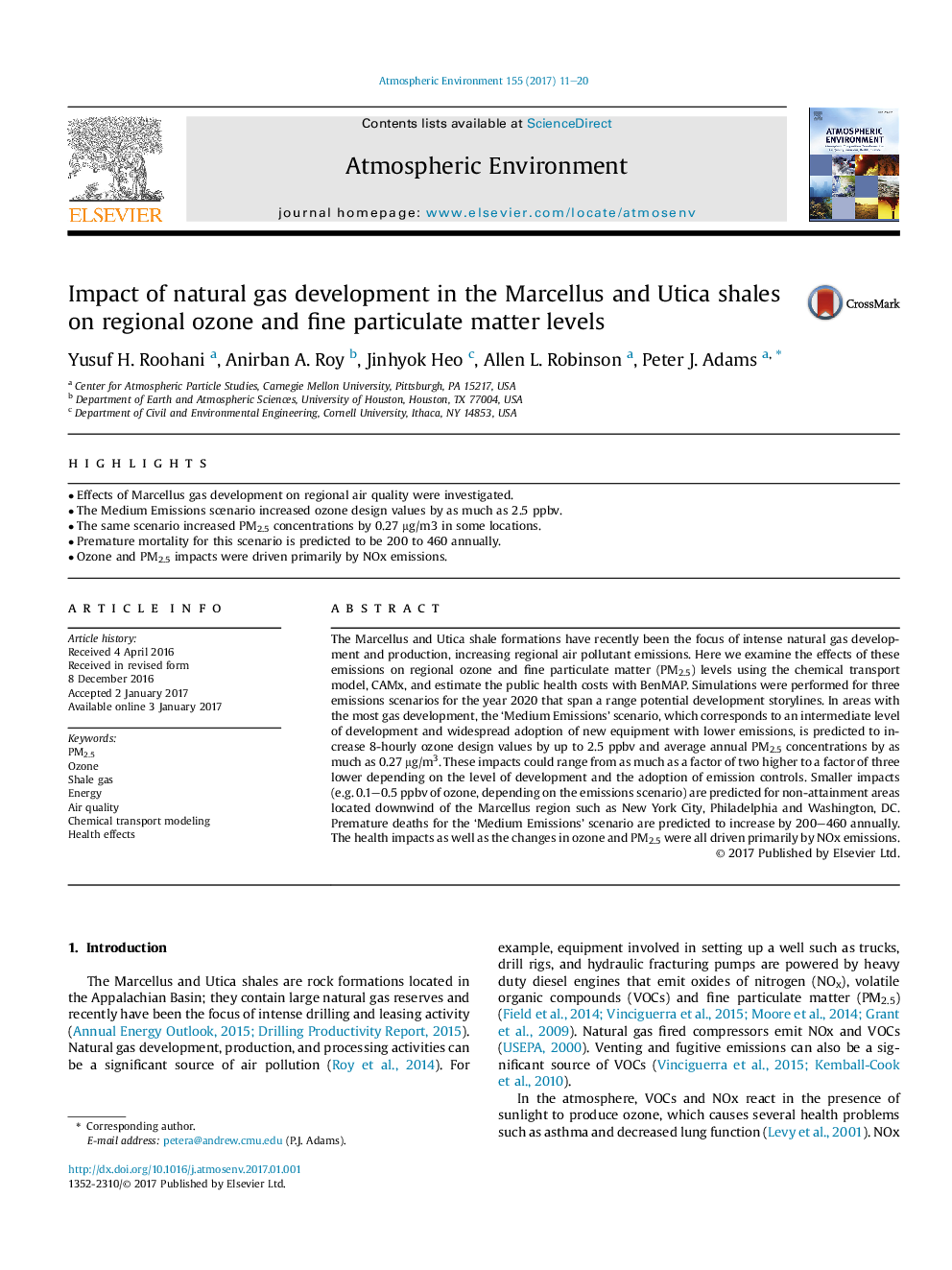| Article ID | Journal | Published Year | Pages | File Type |
|---|---|---|---|---|
| 5752959 | Atmospheric Environment | 2017 | 10 Pages |
â¢Effects of Marcellus gas development on regional air quality were investigated.â¢The Medium Emissions scenario increased ozone design values by as much as 2.5 ppbv.â¢The same scenario increased PM2.5 concentrations by 0.27 μg/m3 in some locations.â¢Premature mortality for this scenario is predicted to be 200 to 460 annually.â¢Ozone and PM2.5 impacts were driven primarily by NOx emissions.
The Marcellus and Utica shale formations have recently been the focus of intense natural gas development and production, increasing regional air pollutant emissions. Here we examine the effects of these emissions on regional ozone and fine particulate matter (PM2.5) levels using the chemical transport model, CAMx, and estimate the public health costs with BenMAP. Simulations were performed for three emissions scenarios for the year 2020 that span a range potential development storylines. In areas with the most gas development, the 'Medium Emissions' scenario, which corresponds to an intermediate level of development and widespread adoption of new equipment with lower emissions, is predicted to increase 8-hourly ozone design values by up to 2.5 ppbv and average annual PM2.5 concentrations by as much as 0.27 μg/m3. These impacts could range from as much as a factor of two higher to a factor of three lower depending on the level of development and the adoption of emission controls. Smaller impacts (e.g. 0.1-0.5 ppbv of ozone, depending on the emissions scenario) are predicted for non-attainment areas located downwind of the Marcellus region such as New York City, Philadelphia and Washington, DC. Premature deaths for the 'Medium Emissions' scenario are predicted to increase by 200-460 annually. The health impacts as well as the changes in ozone and PM2.5 were all driven primarily by NOx emissions.
